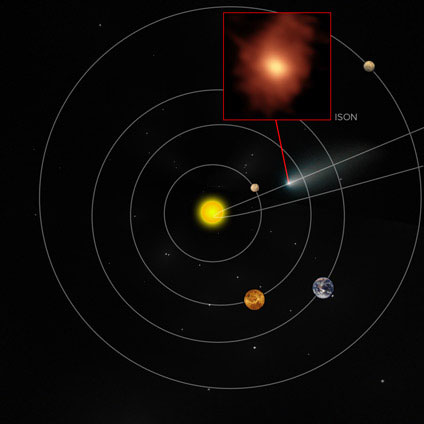 An international team of scientists using the Atacama Large Millimeter/submillimeter Array (ALMA) has made incredible 3D images of the ghostly atmospheres surrounding comets ISON and Lemmon. These new observations provided important insights into how and where comets forge new chemicals, including intriguing organic compounds.
An international team of scientists using the Atacama Large Millimeter/submillimeter Array (ALMA) has made incredible 3D images of the ghostly atmospheres surrounding comets ISON and Lemmon. These new observations provided important insights into how and where comets forge new chemicals, including intriguing organic compounds.
Aug 11th, 2014
Read more
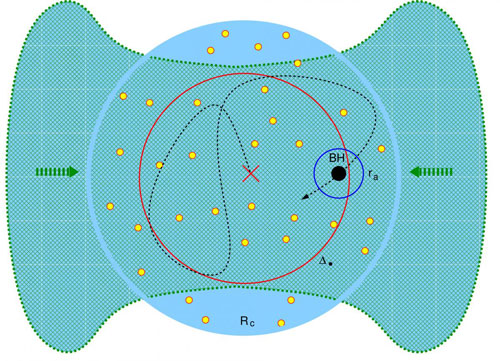 A new model shows how early black holes could have grown to over a billion solar masses.
A new model shows how early black holes could have grown to over a billion solar masses.
Aug 11th, 2014
Read more
Planetary scientists have shed some light on the bombardment history of our solar system by studying a unique volcanic meteorite recovered in Western Australia. Captured on camera seven years ago falling on the WA side of the Nullarbor Plain, the Bunburra Rockhole Meterorite has unique characteristics that suggest it came from a large asteroid that has never before been identified.
Aug 8th, 2014
Read more
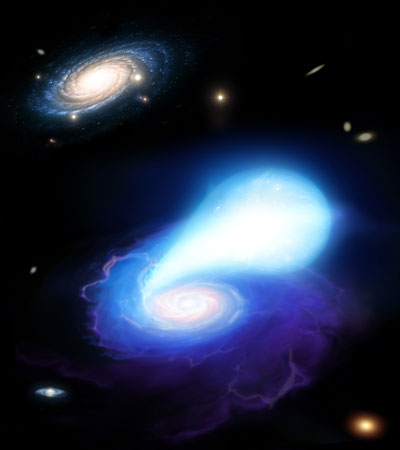 A research team of astronomers and astrophysicists have found that some of the Universe's loneliest supernovae are likely created by the collisions of white dwarf stars into neutron stars.
A research team of astronomers and astrophysicists have found that some of the Universe's loneliest supernovae are likely created by the collisions of white dwarf stars into neutron stars.
Aug 8th, 2014
Read more
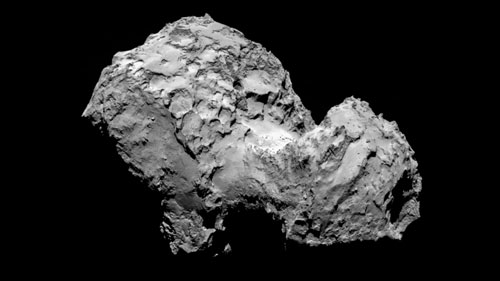 The Rosetta spacecraft has travelled over 6.4 billion kilometres, swung by planets, examined two asteroids during flybys, and spent more than two and a half years in hibernation during its 10-year journey. On 6 August 2014 at 11:30 CEST, with the Philae lander on board, it arrived at its target comet and entered into orbit.
The Rosetta spacecraft has travelled over 6.4 billion kilometres, swung by planets, examined two asteroids during flybys, and spent more than two and a half years in hibernation during its 10-year journey. On 6 August 2014 at 11:30 CEST, with the Philae lander on board, it arrived at its target comet and entered into orbit.
Aug 8th, 2014
Read more
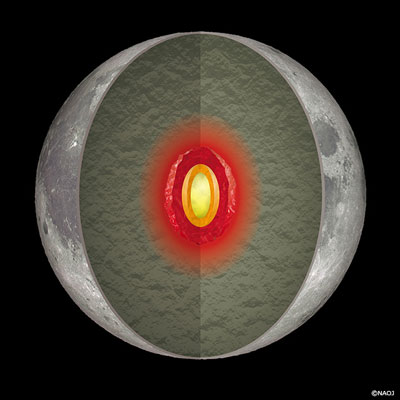 Researchers have found that there is an extremely soft layer deep inside the Moon and that heat is effectively generated in the layer by the gravity of the Earth.
Researchers have found that there is an extremely soft layer deep inside the Moon and that heat is effectively generated in the layer by the gravity of the Earth.
Aug 8th, 2014
Read more
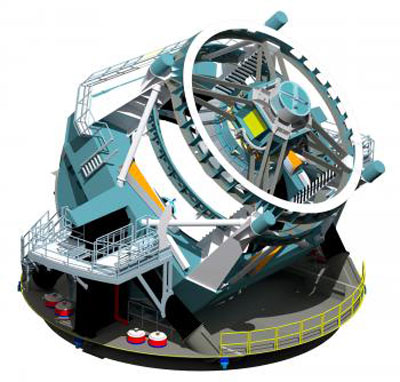 Large Synoptic Survey Telescope gets funding to begin construction.
Large Synoptic Survey Telescope gets funding to begin construction.
Aug 8th, 2014
Read more
Researchers are a step closer to understanding the birth of the sun.
Aug 7th, 2014
Read more
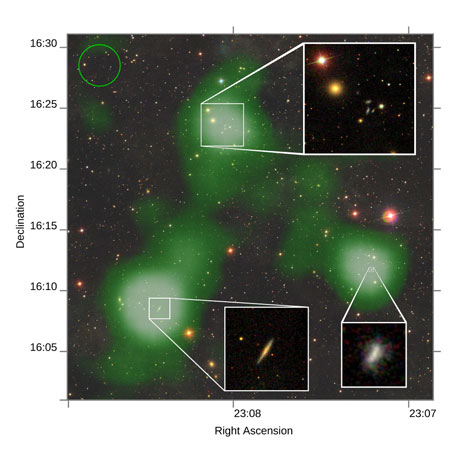 Astronomers have found a bridge of atomic hydrogen gas 2.6 million light years long between galaxies 500 million light years away.
Astronomers have found a bridge of atomic hydrogen gas 2.6 million light years long between galaxies 500 million light years away.
Aug 7th, 2014
Read more
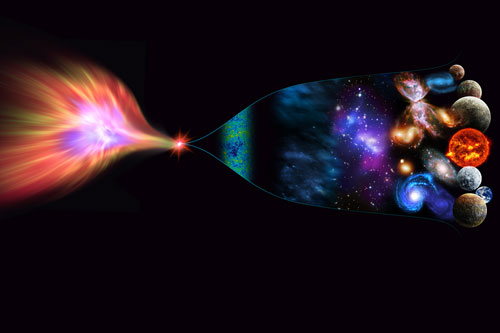 What we perceive as the big bang, researchers argue, could be the three-dimensional 'mirage' of a collapsing star in a universe profoundly different than our own.
What we perceive as the big bang, researchers argue, could be the three-dimensional 'mirage' of a collapsing star in a universe profoundly different than our own.
Aug 7th, 2014
Read more
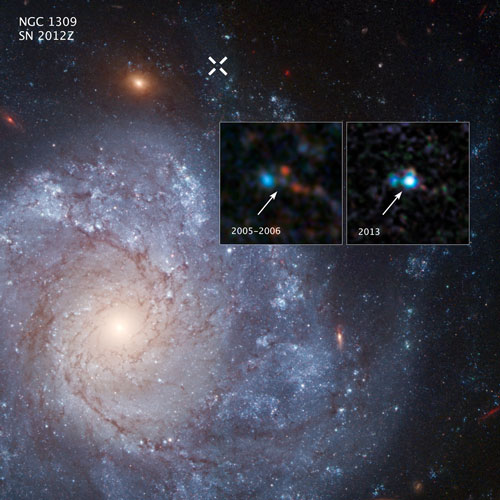 Using the Hubble Space Telescope, a team of astronomers has spotted a star system that could have left behind a 'zombie star'' after an unusually weak supernova explosion.
Using the Hubble Space Telescope, a team of astronomers has spotted a star system that could have left behind a 'zombie star'' after an unusually weak supernova explosion.
Aug 6th, 2014
Read more
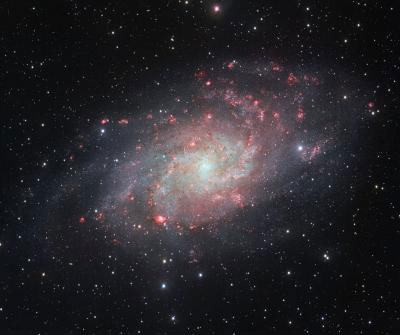 The VLT Survey Telescope at ESO's Paranal Observatory in Chile has captured a beautifully detailed image of the galaxy Messier 33. This nearby spiral, the second closest large galaxy to our own galaxy, is packed with bright star clusters, and clouds of gas and dust. The new picture is amongst the most detailed wide-field views of this object ever taken and shows the many glowing gas clouds in the spiral arms with particular clarity.
The VLT Survey Telescope at ESO's Paranal Observatory in Chile has captured a beautifully detailed image of the galaxy Messier 33. This nearby spiral, the second closest large galaxy to our own galaxy, is packed with bright star clusters, and clouds of gas and dust. The new picture is amongst the most detailed wide-field views of this object ever taken and shows the many glowing gas clouds in the spiral arms with particular clarity.
Aug 6th, 2014
Read more
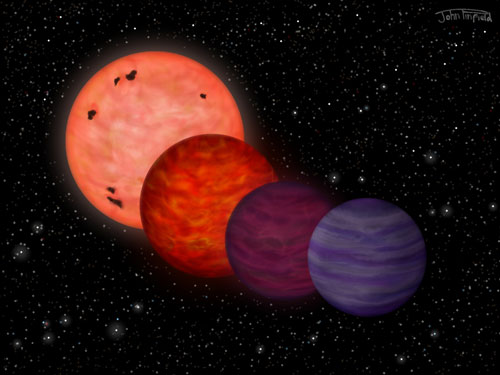 Astronomers have discovered an extremely cool object that could have a particularly diverse history - although it is now as cool as a planet, it may have spent much of its youth as hot as a star.
Astronomers have discovered an extremely cool object that could have a particularly diverse history - although it is now as cool as a planet, it may have spent much of its youth as hot as a star.
Aug 5th, 2014
Read more
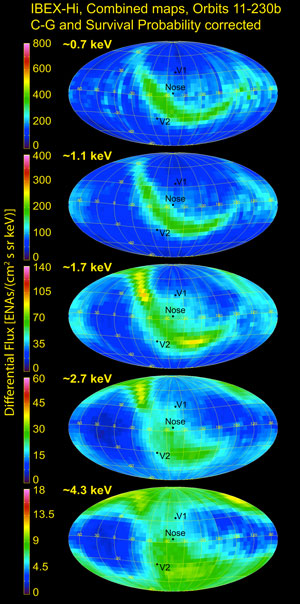 Scientists yesterday highlighted an impressive list of achievements in researching the outer heliosphere at the 40th International Committee on Space Research Scientific Assembly in Moscow.
Scientists yesterday highlighted an impressive list of achievements in researching the outer heliosphere at the 40th International Committee on Space Research Scientific Assembly in Moscow.
Aug 4th, 2014
Read more
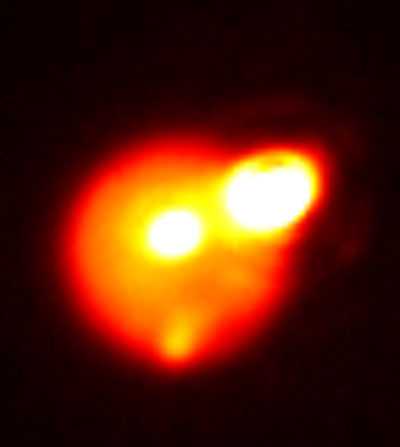 An image from the Gemini Observatory captures what is one of the brightest volcanoes ever seen in our solar system. The image, obtained on Aug. 29, reveals the magnitude of the eruption that was the 'grand finale' in a series of eruptions on the distant moon.
An image from the Gemini Observatory captures what is one of the brightest volcanoes ever seen in our solar system. The image, obtained on Aug. 29, reveals the magnitude of the eruption that was the 'grand finale' in a series of eruptions on the distant moon.
Aug 4th, 2014
Read more
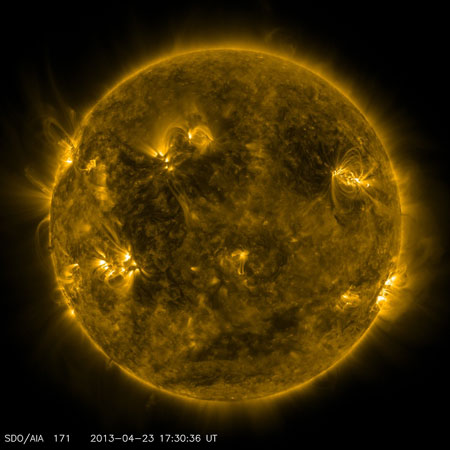 Scientists have recently gathered some of the strongest evidence to date to explain what makes the sun's outer atmosphere so much hotter than its surface. The new observations of the small-scale extremely hot temperatures are consistent with only one current theory: something called nanoflares - a constant peppering of impulsive bursts of heating, none of which can be individually detected - provide the mysterious extra heat.
Scientists have recently gathered some of the strongest evidence to date to explain what makes the sun's outer atmosphere so much hotter than its surface. The new observations of the small-scale extremely hot temperatures are consistent with only one current theory: something called nanoflares - a constant peppering of impulsive bursts of heating, none of which can be individually detected - provide the mysterious extra heat.
Aug 1st, 2014
Read more
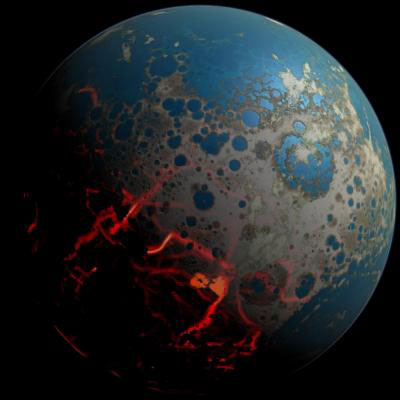 New research shows that more than four billion years ago, the surface of Earth was heavily reprocessed as a result of giant asteroid impacts. A new model based on existing lunar and terrestrial data sheds light on the role asteroid bombardments played in the geological evolution of the uppermost layers of the Hadean Earth.
New research shows that more than four billion years ago, the surface of Earth was heavily reprocessed as a result of giant asteroid impacts. A new model based on existing lunar and terrestrial data sheds light on the role asteroid bombardments played in the geological evolution of the uppermost layers of the Hadean Earth.
Jul 31st, 2014
Read more
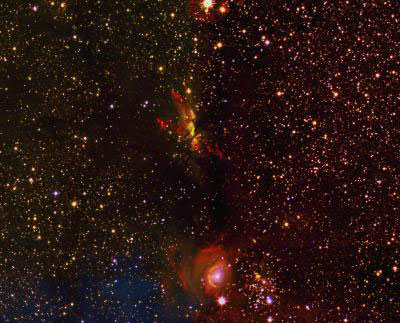 Preliminary research findings from the University of Kent have identified hundreds of so far unknown jets from young stars, as well as numerous new planetary nebulae in the Galactic Plane.
Preliminary research findings from the University of Kent have identified hundreds of so far unknown jets from young stars, as well as numerous new planetary nebulae in the Galactic Plane.
Jul 31st, 2014
Read more
 An international team of scientists using the Atacama Large Millimeter/submillimeter Array (ALMA) has made incredible 3D images of the ghostly atmospheres surrounding comets ISON and Lemmon. These new observations provided important insights into how and where comets forge new chemicals, including intriguing organic compounds.
An international team of scientists using the Atacama Large Millimeter/submillimeter Array (ALMA) has made incredible 3D images of the ghostly atmospheres surrounding comets ISON and Lemmon. These new observations provided important insights into how and where comets forge new chemicals, including intriguing organic compounds.
 Subscribe to our Space Exploration News feed
Subscribe to our Space Exploration News feed













